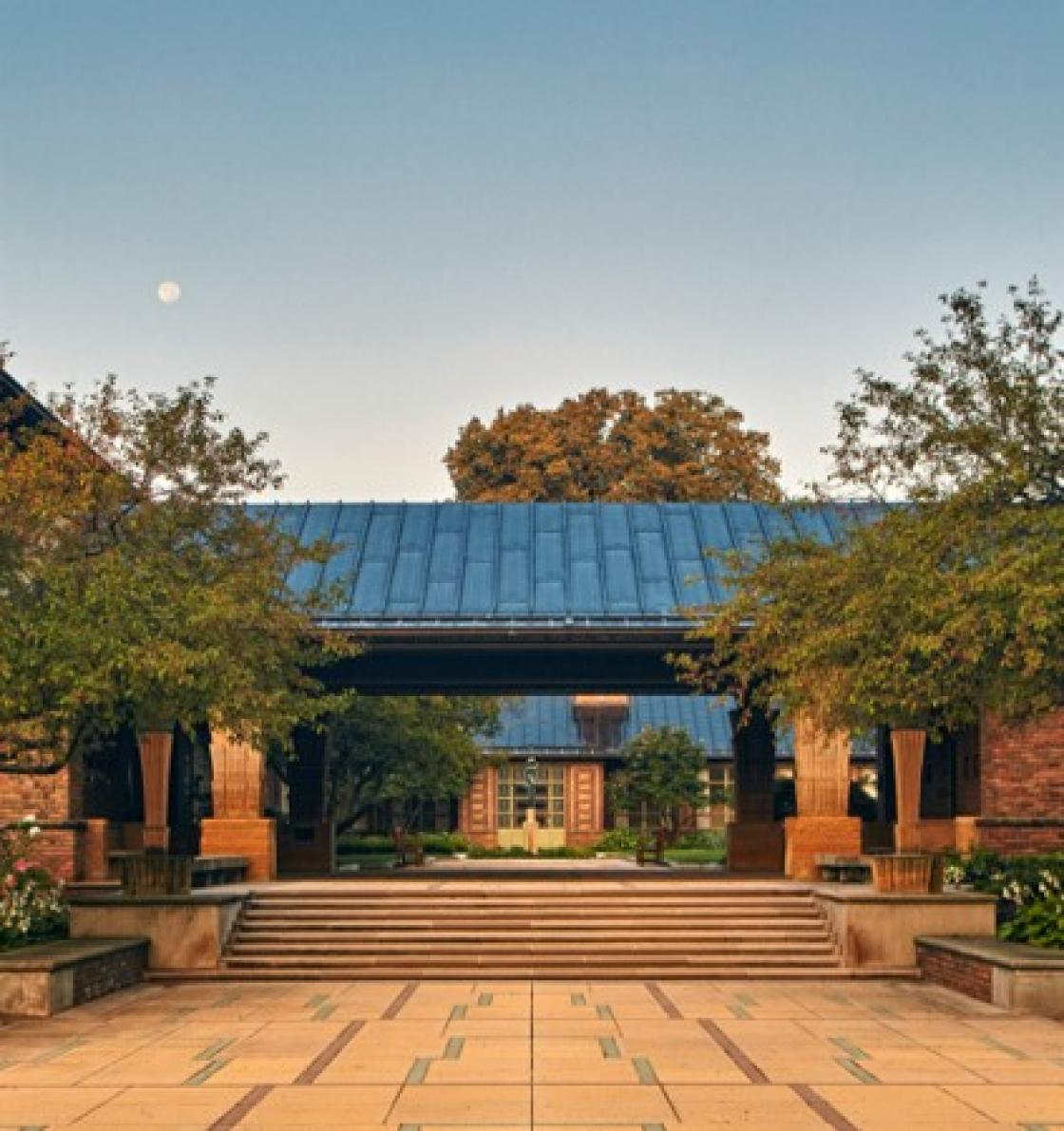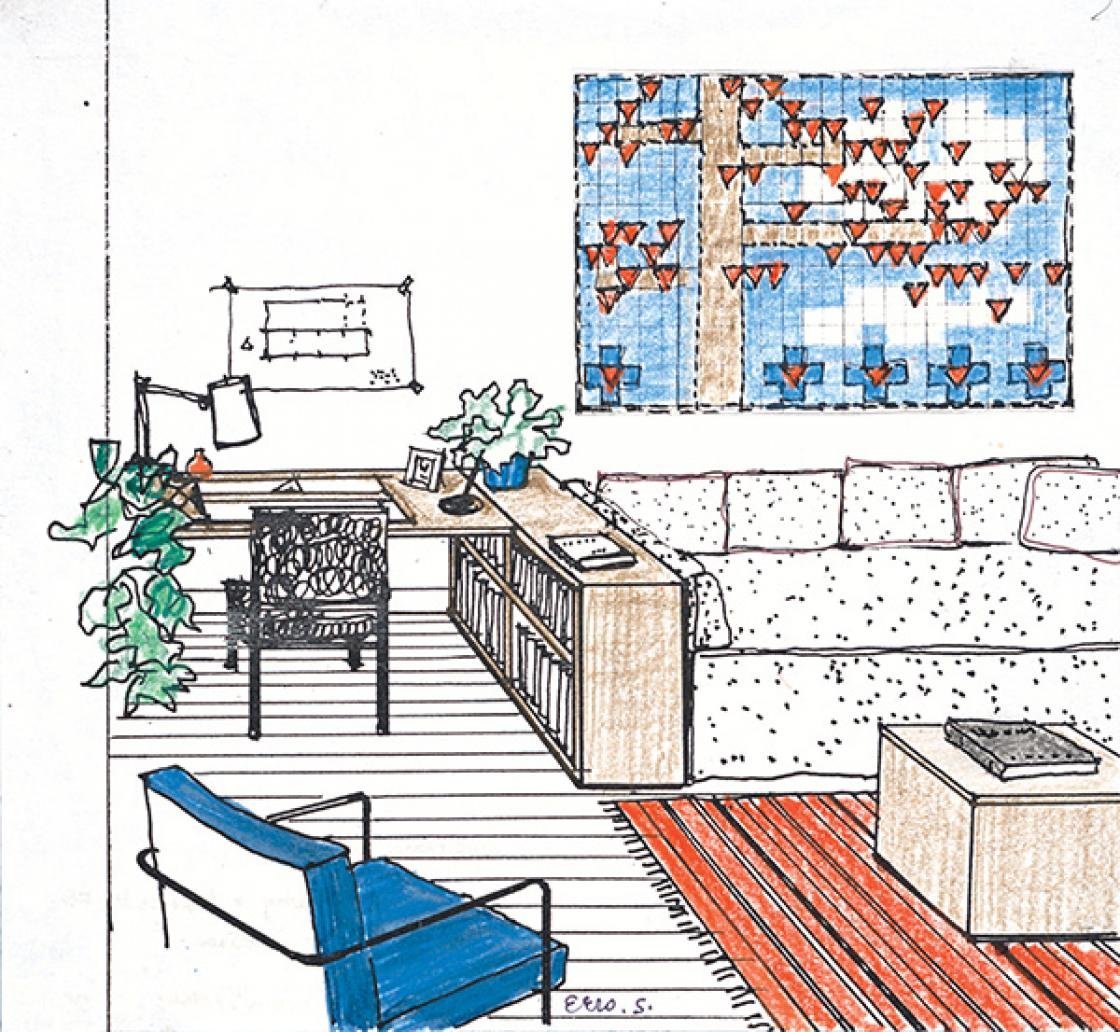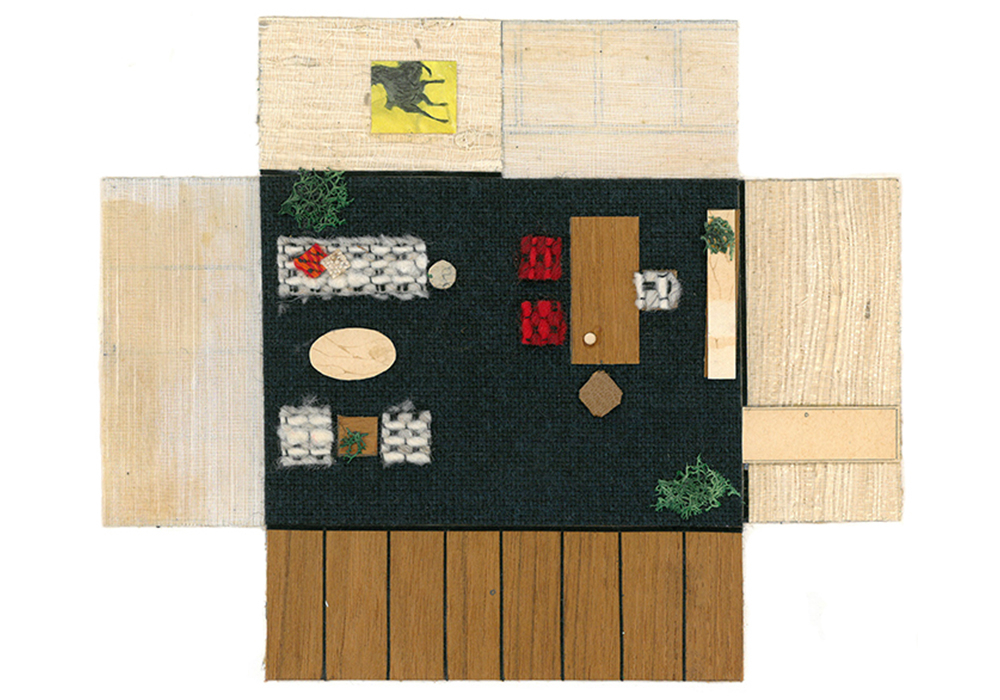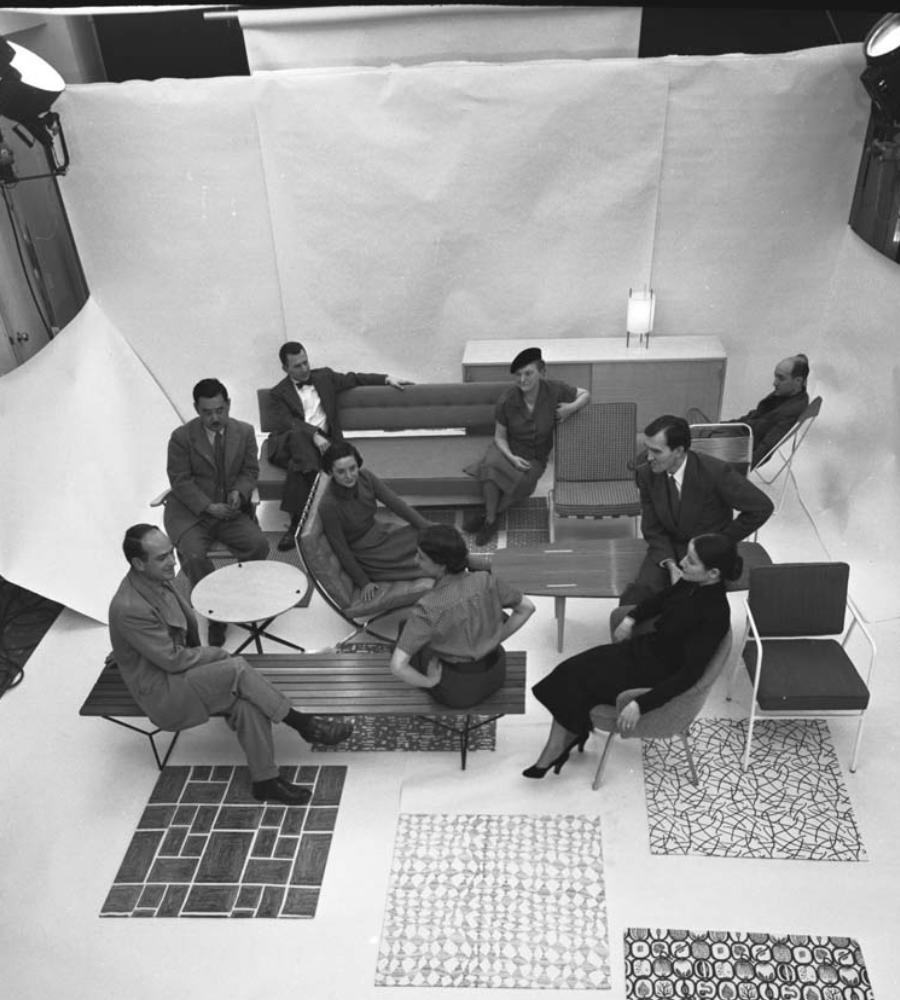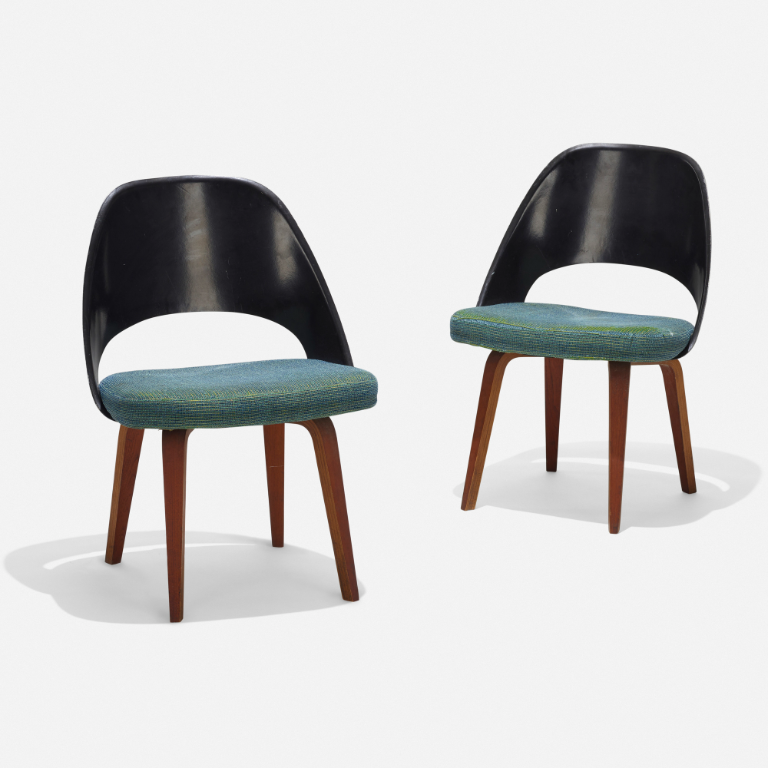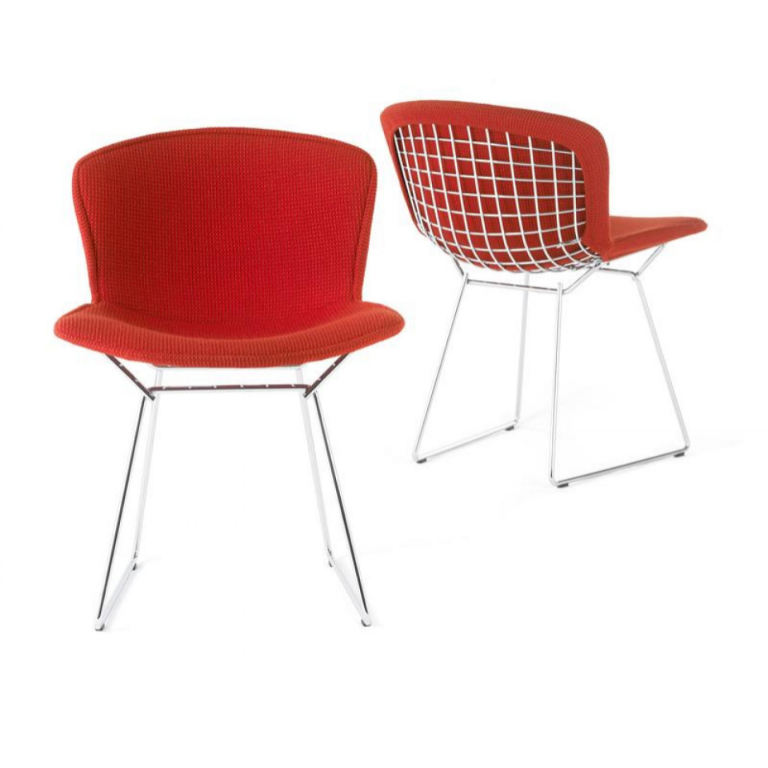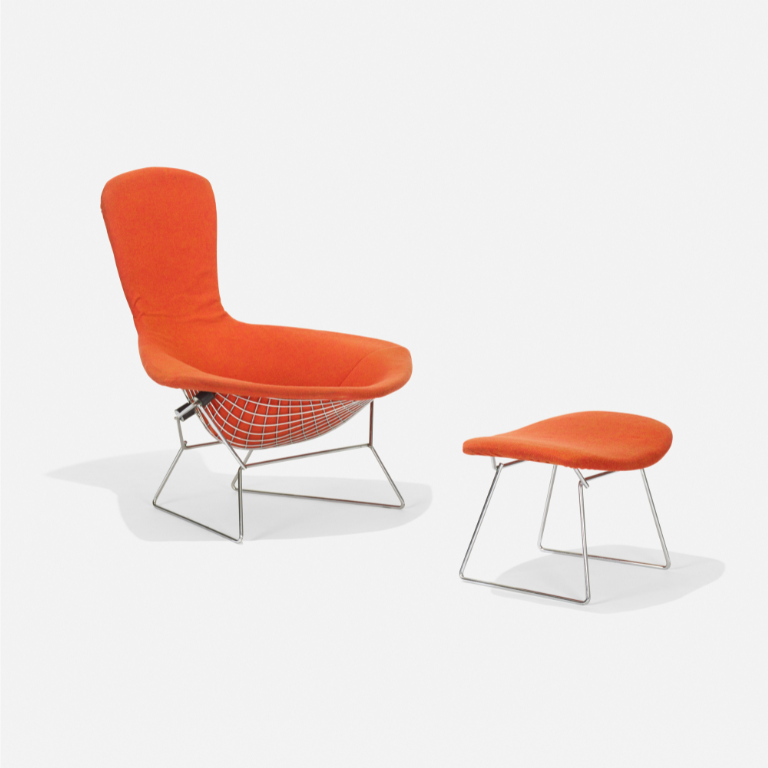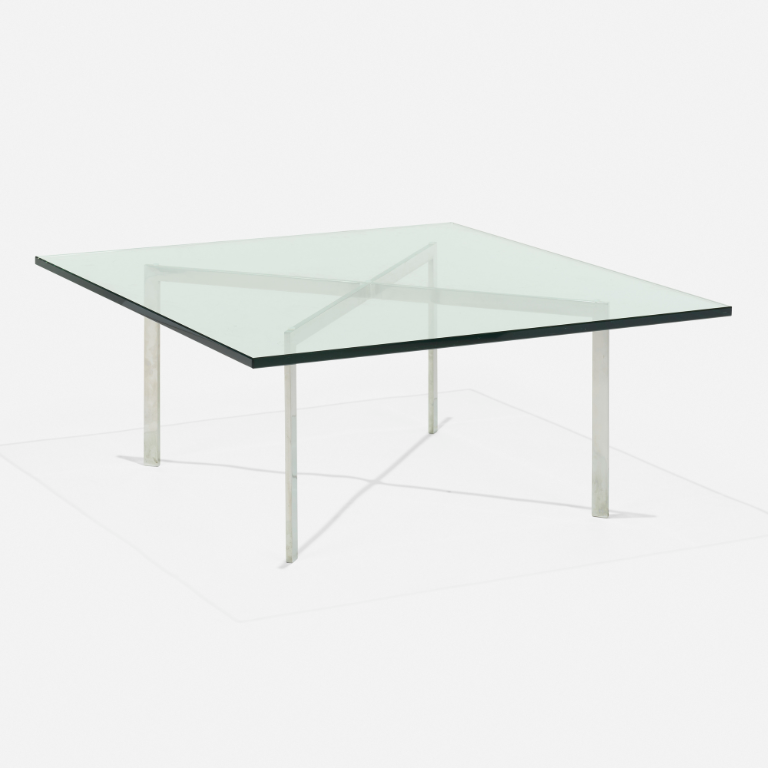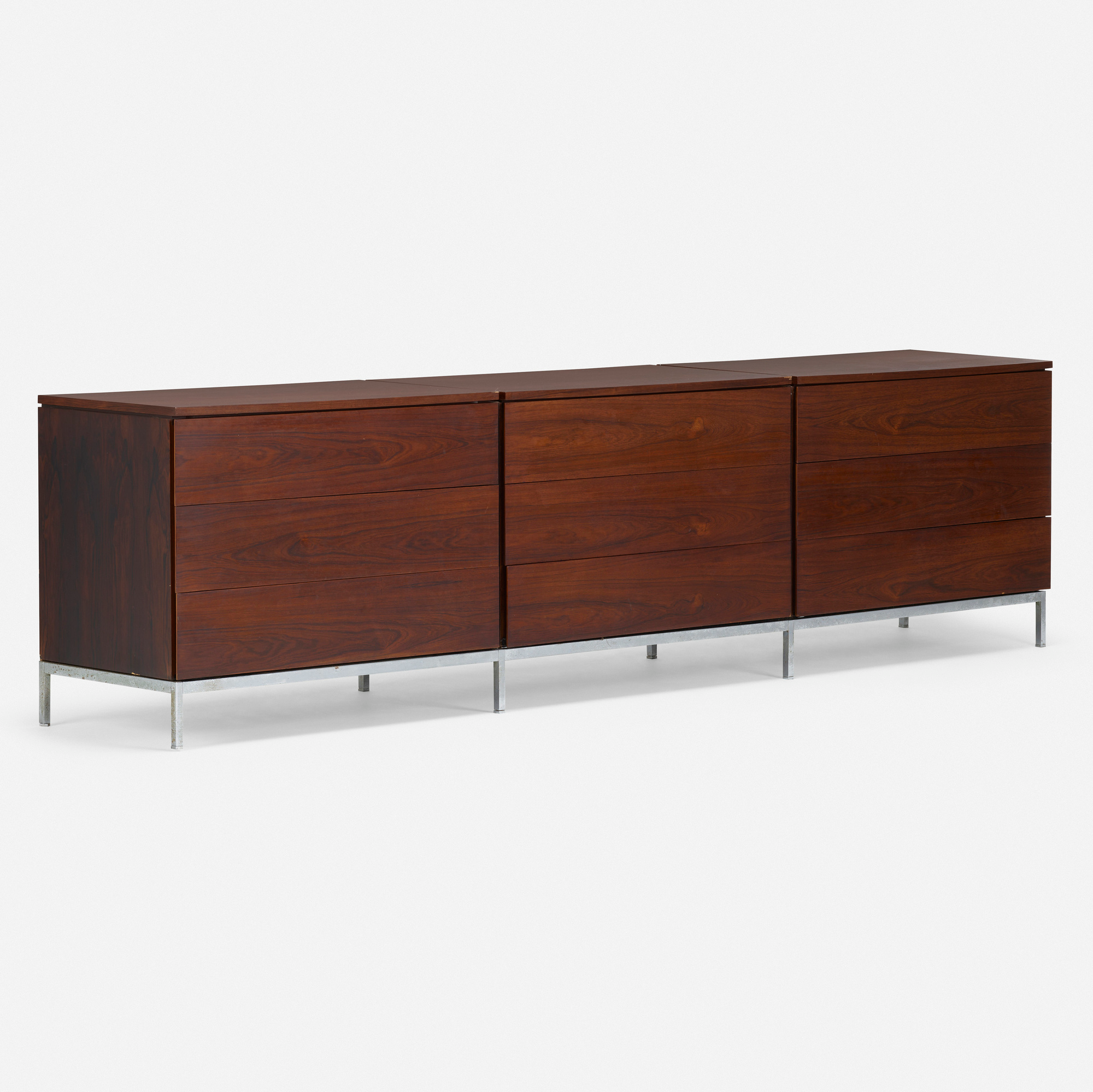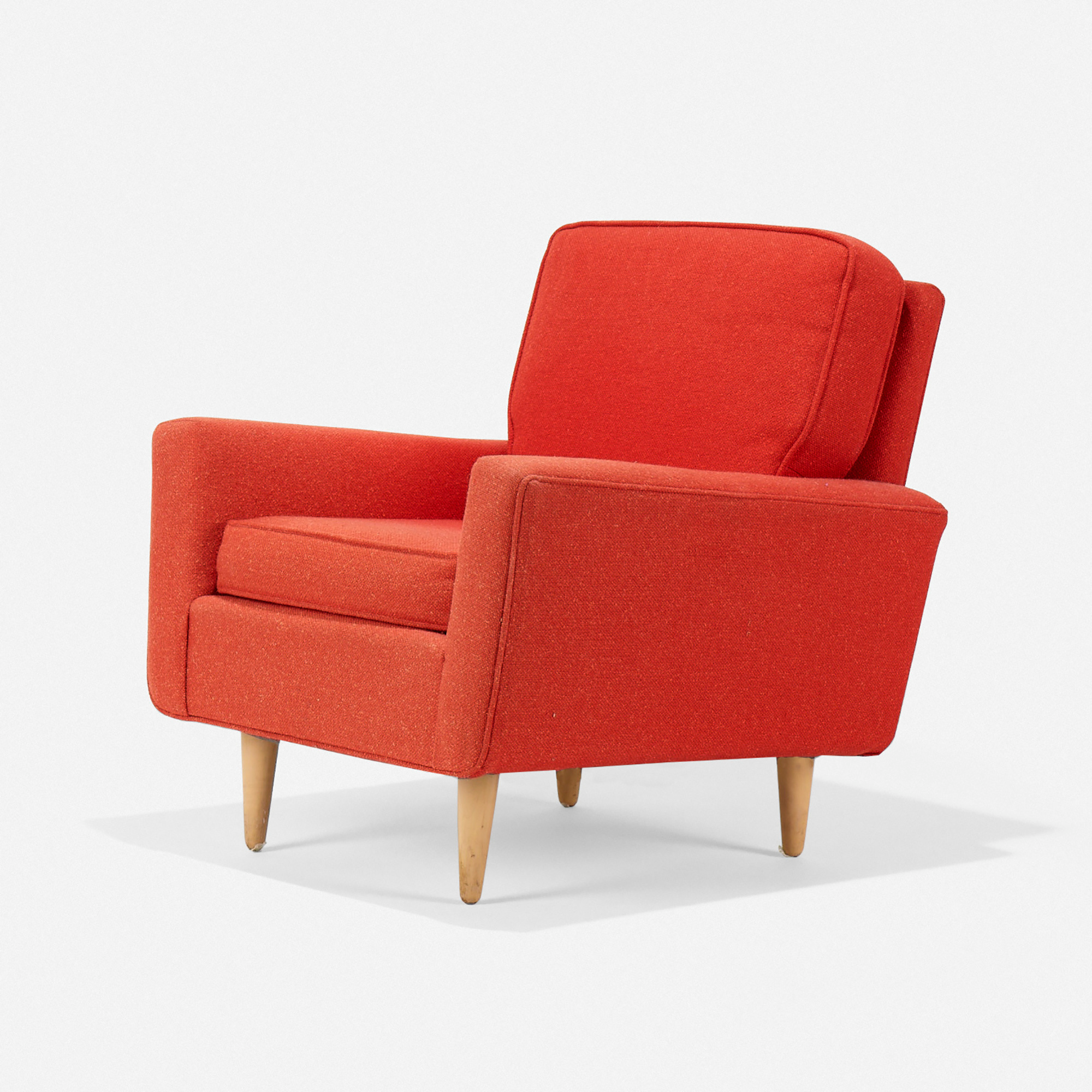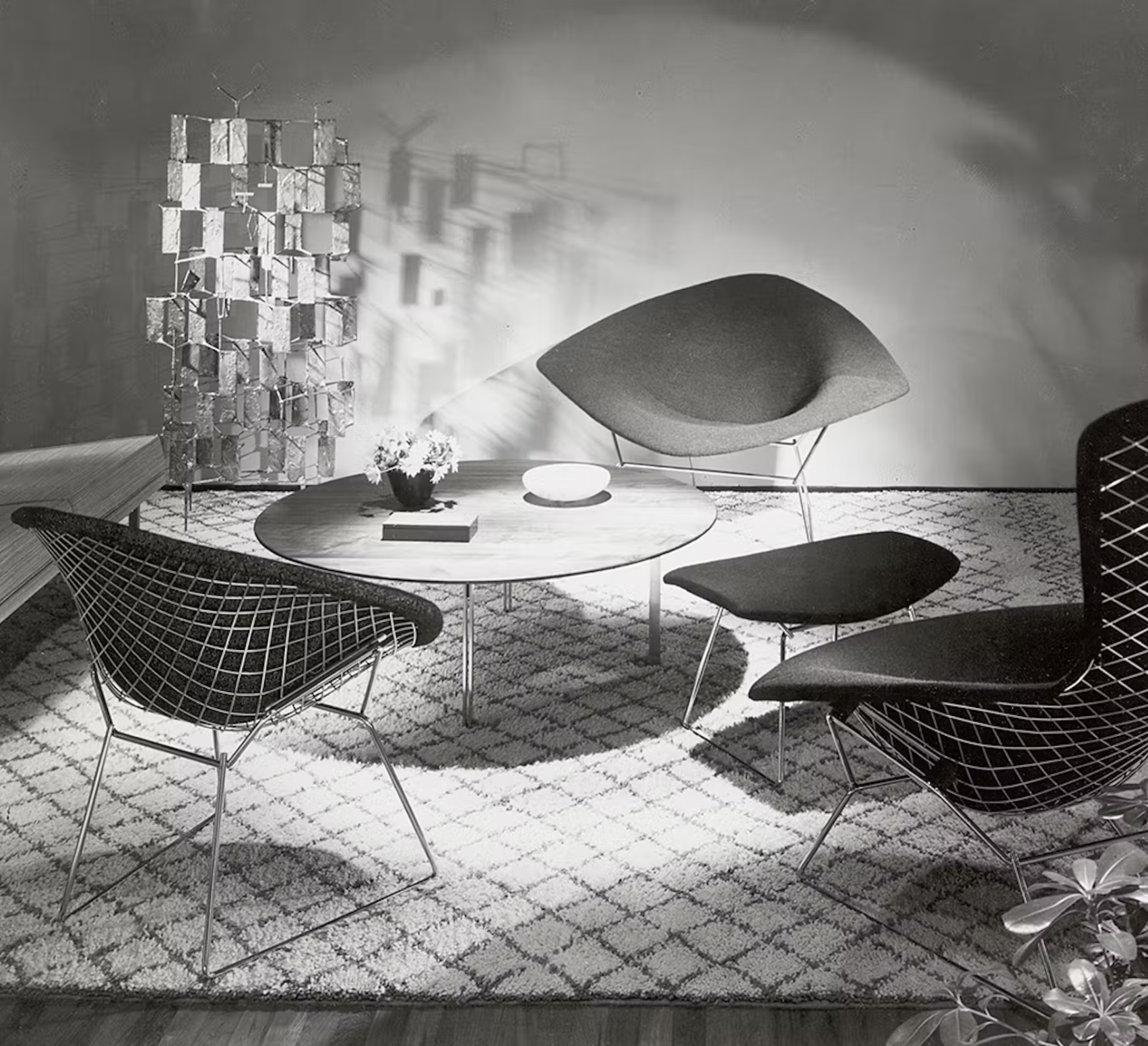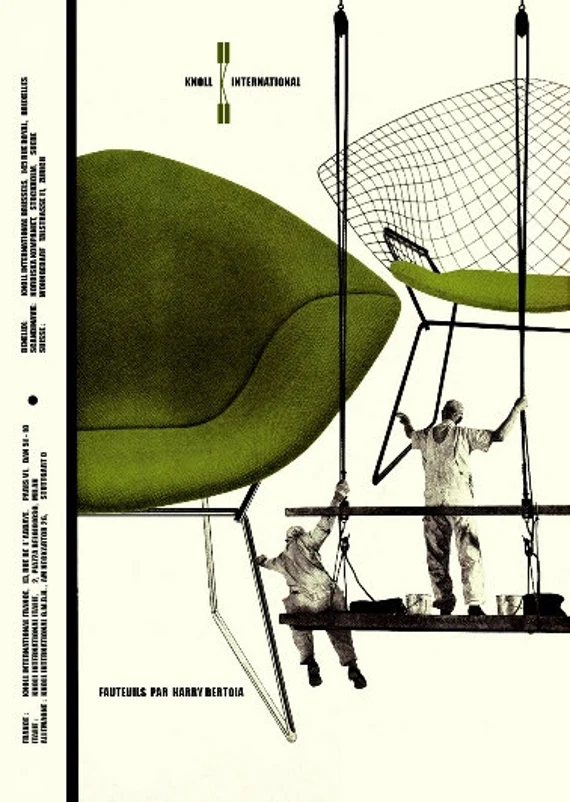The Remarkable Florence Knoll
Photo via kardiel.com
Florence Knoll Bassett, one of the most important figures in American modern design, steered the legendary Knoll brand towards global success as partner, design director, and president. She introduced much of the mid-century modern aesthetic and furniture we know today, in an era that widely considered a women’s place the home, and in an industry and workforce dominated by men. In this portrait of the visionary designer and architect of interior spaces, we explore her life and career.
Born Florence Margaret Schust in Saginaw, Michigan in 1917, Florence’s path towards becoming a designer was set into motion at the age of 12, when she became orphaned and came under the care of a legal guardian. Given her choice of local boarding schools to attend, she chose the Kingswood School for Girls, because of its beautiful design, and this fortuitous decision landed her next door to the neighboring Cranbrook Academy of Art, an incredible incubator of design talent.
Photo by James Haefner via center.cranbrook.edu
Photo by James Haefner via center.cranbrook.edu
Photo by James Haefner via center.cranbrook.edu
The progressive curriculums at both Kingswood and Cranbrook were designed by Finnish modernist architect Eliel Saarinen (who was also the architect of both schools), and they encouraged creativity, independent thinking, collaboration, and the practice of assimilating the different arts. Early school projects reveal Florence’s instinct for creating comprehensive designs (a hallmark of her later work), in plans for a house and her own dorm room, which included everything from the structural design, to the custom furniture, interiors, and textiles. Later, while studying at the Armour Institute of Technology (now the Illinois Institute of Technology) under Bauhaus Director, Ludwig Mies van der Rohe, his philosophy of gesamtkunstwerk (or total work of art) made a huge impression on her. It coincided with her inclination to create holistic integrated designs, and this alignment further strengthened and encouraged her vision.
Florence’s dorm room sketch via shebuildspodcast.com
This early interest in architecture and design caught the eye of Eliel Saarinen, who along with his wife Loja, a textile artist and Kingswood’s director of weaving, adopted Florence into their family’s fold, taking her along with them on their vacations throughout Europe. Among them she became infused with art and the history and future of design, and her interests were uniquely nurtured. So, from an early age, she was already moving in circles with modern design heavies, future ones as well. Eero, the Saarinen’s son (soon to become a celebrated architect like his father), was a schoolmate and close friend, and he became like a brother to her. Other classmates at Cranbrook included Harry Bertoia, and Charles and Ray Eames.
Florence went on to study at Columbia University’s School of Architecture Planning Program, London’s Architectural Association, and the aforementioned Armour Institute of Technology, where she earned her Bachelor’s in Architecture under Ludwig Mies van der Rohe. She interned at the Cambridge offices of Bauhaus founder and architect Walter Gropius and his protégé Marcel Breuer, and then moved to New York City in 1941.
Florence with the Saarinen family. Photo via Knoll.com
In New York she worked at the offices of Harrison, Abramovitz, and Fouilhoux, the designers of New York’s Rockefeller Center, Lincoln Center, and United Nations buildings, while also taking on interior design side jobs. One of these came through Hans Knoll, a third generation modern furniture dealer with his own business in the city, who stopped by the offices one day to promote his family’s Bauhaus inspired Prodomo line of chairs. Hans invited Florence to do some interior design work for him, and after several successful collaborations, she joined his team full time. Three years later they were married, and she became his full partner, and the design director of the newly rebranded Knoll Associates. Together, they set out to bring the modernist style coming out of Europe to the U.S.
Photo courtesy of the Knoll International Archive via stylepark.com
Photo courtesy of Knoll, Inc. via nytimes.com
Photo via architecturaldigest.com
The early days of Knoll Associates overlapped with the end of WWII and the beginning of the post-war era; and designs were limited by a general lack of supplies. Most raw materials and production facilities had been dedicated to the war effort, and essential components like textiles, fabric dyes, glues, and down feathers (for upholstery filling) were difficult to find. However, these limiting conditions only forced an ingenuity and resourcefulness that helped to define the Knoll aesthetic. The innovative mindset of exploration and experimentation from this era guided their design philosophy well beyond the war years.
As design director, Florence headed the Knoll Planning Unit, the in-house interior design firm, whose innovative style played a huge role in the company’s success. With her comprehensive approach, every element of a room was included in a Planning Unit design: the furniture, lighting, artwork displays, textiles, and accessories. To ensure the most successful results, research was essential. Not just research on the physical dimensions or conditions of a space, but the embodied and emotional needs of those who would work and live within it. She and her Planning Unit interviewed the staff of corporate clients on the ways they used their offices each day, assessed habitual actions and patterns, and from this place of enquiry, came up with their beautiful, ergonomic, and user-friendly designs that most importantly, were based on the actual needs of the building’s inhabitants. This is a similar approach to the one at Whipple Russell, where “the lives that occupy the work, inspire the body of work”.
Photo courtesy of Knoll, Inc. via knoll.com
Photo via nytimes.com
Photo via kardiel.com
The Knoll Planning Unit became known for their corporate interiors, which Florence totally redesigned with open plan layouts. Floating panels and screens replaced walls, and furniture groupings delineated the usage of space. The one area that retained its former sense of privacy and exclusion was the executive suite, but here too she brought a “humanized modernism”. Imposing executive desks which formally cut across a room, diagonally confronting the door, were replaced with elegant, airy work tables whose surfaces could double as conference tables. Everything was reoriented into streamlined positions, and files and papers were hidden out of sight inside of free-standing credenzas that also provided space for artwork displays, an integral part of her total spatial designs. The result was like an inviting living room, and less like a cold, impersonal, or intimidating office. Each project’s success proved her belief that “good design is good business”, and clients included some of the biggest corporate names of the era: CBS, IBM, GM, Seagram, and Heinz.
Photo via dezeen.com
Photo courtesy of Knoll, Inc. via knoll.com
Photo via atomic-ranch.com
Photo via ids.si.edu
Photo via ids.si.edu
via ids.si.edu
To convey the look and feel of a design, Florence walked her clients through an experiential 3-D model. She called these scaled to size cardboard vignettes paste-ups, where on top of sketches of a room and its furniture, were samples of the proposed materials. These could include swatches of fabric, bits of wood and leather, images of marble and stone, dabs of paint color, and leaves from plants, all in their designated places. For those clients reluctant to embrace a new modernist aesthetic, the tactile presence of such essential and familiar luxury materials could be reassuring.
Photo via lamodern.com
Photo via lamodern.com
Photo via ids.si.edu
Photo by Dean Van Dis, courtesy of the Knoll Archives, via archive.pinupmagazine.org
One of the ways that Florence revolutionized the design world while at Knoll, was with her furniture collaborations, which she initiated with leading architects, artists, and designers (many who were friends). She sought out existing designs for licensing for Knoll’s exclusive sale, and also commissioned the creation of original pieces. Her curatorial eye, impeccable intuition, and desire to nurture innovation brought many now iconic mid-century modern designs to the marketplace,. Many of these are still in production today, others circulating throughout vintage stores, auctions, private collections, and museums. Her willingness to collaborate with others (a natural extension of the collaborative spirit encouraged at school) was genius, and a fundamental part of Knoll’s success. It brought incredibly modern, cutting edge designs to the mainstream, while she gave all due respect, credit, royalties, and commissions to each artist, an unusual practice for the time.
Photo via kardiel.com
Florence Knoll & left to right Harry Bertoia, George Nakashima, Richard Stein, Knoll Bassett, Eszter Haraszty, Noémi Raymond, Dorothy Cole, Abel Sorensen & Isamu Noguchi. Courtesy Tony Vaccaro/Tony Vaccaro Studio via metropolismag.com
Some of these artist collaborations included:
Eero Saarinen: Florence’s Cranbrook classmate and “brother” from childhood, a successful architect and pioneer of the corporate campus. Saarinen created his cult-loved Womb Chair at Florence’s request for a chair she could lounge on and curl up in (most others at the time allowing only a stiff, upright position). The fiberglass resin molded base he came up with for this Tulip/Pedestal Collection was a totally new design, and a challenge to make. Even after they’d found a fiberglass shipbuilder in New Jersey who could do the work, it took persuading to get him to try, and even then, the process required a lot of trial and error. Saarinen also designed the celebrated 70 Series Executive Seating Collection, and the Grasshopper Chair for Knoll.
Photo via 1stdibs.com
Photo via wright20.com
Photo via wright20.com
Photo via wright20.com
Photo via lamodern.com
Photo via wright20.com
Harry Bertoia: Artist, sculptor, metalworker, and Florence’s friend and classmate from Cranbrook. Florence invited Bertoia to innovate modern metalworked furniture for Knoll, and given the luxury of space, time, and money, he came up with his classic welded wire Diamond Chairs, Bird Chairs, and Side Chairs in the early 1950s.
Photo via lamodern.com
Photo via phaidon.com
Photo via ragoarts.com
Photo via harrybertoia.org
Photo via wright20.com
Photo via lamodern.com
Ludwig Mies Van der Rohe: Bauhaus Director, proponent of The International Style, and Florence’s former professor. Mies designed his Barcelona Chair with designer and collaborator Lilly Reich for the German Pavilion at Barcelona’s 1929 International Exposition. After that, the chair was never made available to the public, but with persistent persuading, and promises that she would never produce it in any garish colors or fabrics, Florence acquired the rights to the design. Additional Knoll designs by Mies include the rest of the Barcelona Line, the Brno Chair, and the MR Line.
Photo via wright20.com
Photo via wright20.com
Photo via wright20.com
Photo via 1stdibs.com
Photo via wright20.com
Photo via ragoarts.com
Photo via wright20.com
Photo via 1stdibs.com
Photo via wright20.com
Isamu Noguchi: Artist, sculptor, lighting designer, and set designer for Martha Graham, Merce Cunningham, John Cage, and George Balanchine. Noguchi designed a unique wood and wire rocking stool that later became the Cyclone Table, which he licensed to Knoll. The smaller side table debuted in 1954, and the full dining room size in 1957 (Noguchi did not design exclusively for Knoll, he also sold his work through Herman Miller and others).
Photo via wright20.com
Photo via 1stdibs.com
Photo via 1stdibs.com
Photo via wright20.com
Alexander Girard: Celebrated colorist and textile designer (later the textile director at Herman Miller). Girard had a playful approach to modernism, and his Model 108 Coffee Table from 1948 was an early incarnation of the wavy, amoebic, bean-like shapes that became popular in the late 1950s and 60s.
Photo via pinterest.com
Photo courtesy of Knoll, Inc. via knoll.com
Hans Bellman: Bauhaus student, Harvard professor, and former architect for Ludwig Mies van der Rohe. Bellman designed his Model 103 Tripod Table in the late 1940s, then sold it to a Swiss retailer, who Knoll imported it from in 1946.
Photo via wright20.com
Photo via wright20.com
Franco Albini: Neo-Rationalist Italian architect and designer. Albini created his ethereally modern minimalist 1928 Albini Desk and chairs in 1949.
Photo via wright20.com
Photo via 1stdibs.com
Pierre Jeanneret: Swiss architect (and cousin of Le Corbusier). Jeanneret licensed his Scissor Chair to the Knolls in 1948, when they came across it while traveling through Europe.
Photo via wright20.com
Even with all of the above designs and the rest of the Knoll catalog, there were still occasions when a piece of furniture was missing, a side table or a chair that did not yet exist, but which would complete the spatial design. In these cases, Florence would design the pieces herself. Her aesthetic was naturally an extension of the overall Knoll look, which she herself had curated, and her designs featured a stripped down, minimalist style in elegant silhouettes and shapes, with deliberately revealed structural frames and support systems. Her architecturally modern designs became classics, and at one time, made up ⅓ - ½ of the entire Knoll catalog, despite her considering them the “meat and potatoes” that filled in the spaces between more starring designs.
Photo via wright20.com
Photo via wright20.com
Photo via lamodern.com
Photo via ragoarts.com
Photo via wright20.com
Photo via wright20.com
Knoll Textiles, the fabric branch of Knoll Associates was similarly created when Florence found a necessary component of her interior designs missing. Desiring sophisticated textiles that could complete the look and feel of her modern spaces, she turned to men’s suiting fabrics, repurposing them for upholstery. These muted beige and gray wool flannels and tweeds turned out to also provide sound proofing capabilities, and she innovated their use for improving interior acoustics. She also created what became the industry standard method of providing fabric samples: stringing branded swatches together on a chain.
Photo courtesy of Knoll, Inc. via knoll.com
Photo via pinterest.com
She displayed the range of Knoll Textiles as colorful fabric tiles on the walls of the Knoll Showrooms, stylish destinations that were the ultimate marketing tool for the brand. These spaces introduced the Knoll aesthetic to the public through inviting displays of residential interiors, and as the original lifestyle influencer, she mixed modern artworks and sculptures in amongst the furniture and textiles to create the look and feel of an aspirationally chic modern home. The flagship showroom opened on Madison Avenue in 1948, and later locations included Los Angeles, San Francisco, Chicago, Dallas, Paris, Milan, and Stuttgart.
Photo via lumens.com
Photo via coolhunting.com
Photo courtesy of the Knoll Archive via dwell.com
Photo via dezeen.com
Photo via ids.si.edu
Photo courtesy of the Knoll Archive via core77.com
Photo via pinterest.com
Photo courtesy of Knoll, Inc. via knoll.com
Helpful in creating the look of the showrooms, the brand’s advertising campaigns, and their graphics was the photographer, art director, and graphic designer, Herbert Matter, who worked for the company for 20 years. Together, he and Florence came up with many original and witty designs.
Photo courtesy of Knoll, via core77.com
Photo courtesy of Knoll, via knoll.com
Photo courtesy of Knoll, via knoll.com
Photo courtesy of Knoll, via harrybertoia.org
Photo courtesy of the Knoll Archives via archive.pinupmagazine.org
Photo courtesy of Knoll, via Phaidon and atomic-ranch.com
Florence stepped into the role of President of Knoll in 1955, when Hans was killed in a devastating car crash in Cuba. She ran the company in that capacity for five years, continuing to steer it towards global success, until selling it to the Art Metal Construction Company, staying on for another five years as design director. After retiring she moved to Florida with her second husband, Harry Hood Bassett, the head of the First National Bank of Miami, a former Knoll client.
Knoll furniture has been displayed at the New York Met Museum, MOMA, the Louvre, the Musée des Arts Décoratifs in Paris, the Brooklyn Museum of Art, Cooper Hewitt Museum of Design, and New York’s Bard Graduate Center. In 2004, the Philadelphia Museum dedicated an exhibit to Florence titled, Florence Knoll Bassett: Defining Modern. At 87 years old, she curated the show herself, directing the layout, colors, materials, typeface and look of the exhibit through her paste-ups and site visits. She also curated her drawings, photos, and letters for donation to the Smithsonian Institute in 2000, and delivered them in color coded files and custom boxes. She was awarded the Gold Medal for Industrial Design from the AIA (American Institute of Architects) in 1961, the American Society of Interior Designers’ Total Design Award in 1977 (the first woman to receive it), and the Athena Award from RISD (Rhode Island School of Design) in 1983. She was inducted into the Interior Design Magazine Hall of Fame in 1985, made an honorary member of the Industrial Designers Society of America, and received the National Medal of the Arts in 2002. Florence Knoll Bassett died at the age of 101 in 2019.
Photo courtesy of Todd Eberle via architectmagazine.com
The Knoll company lives on, still a global leader of modern design, though amid the upheaval of the pandemic in May 2021 they were bought by longtime competitor, Herman Miller, becoming MillerKnoll. The two companies had similar trajectories throughout the years, gaining success in the post war era, and both featured the products of modern design stars, many of whom were peers and collaborators from the Cranbrook days (Herman Miller had been the exclusive home for Ray and Charles Eames’ designs). Now one company, they make up the biggest modern design office furniture company in the world.
Photos courtesy of Knoll, Inc., the Knoll Archives, knoll.com, architecturaldigest.com, nytimes.com, dwell.com, dezeen.com, Phaidon, phaidon.com, harrybertoia.org, Wright Auctions, wright20.com, ids.si.edu, architectmagazine.com, pinterest.com, lamodern.com, ragoarts.com, 1stdibs.com, Todd Eberle, lumens.com, archive.pinupmagazine.org, atomic-ranch.com, core77.com, coolhunting.com, kardiel.com, Tony Vaccaro/Tony Vaccaro Studio, metropolismag.com, Dean Van Dis, stylepark.com, shebuildspodcast.com, James Haefner, and center.cranbrook.edu.


